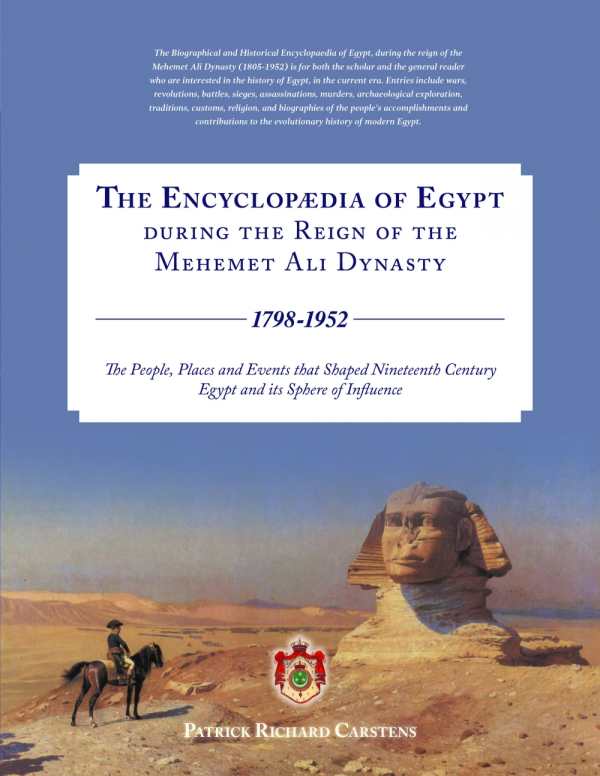
The Encyclopædia of Egypt during the Reign of the Mehemet Ali Dynasty 1798-1952
The People, Places and Events that Shaped Nineteenth Century Egypt and its Sphere of Influence
This is a fascinating look into a period of Egypt’s history that will intrigue anyone who studies Middle Eastern politics.
The ancient history of Egypt is fairly well publicized the world over, and little wonder; flamboyant royal tombs are quite the scene-stealers. However, the more mundane political stressors that gave rise to modern Egypt are surprisingly fascinating, not least of all because they explain so much about Egypt as it exists today. The subject of Patrick Richard Carstens’s The Encyclopædia of Egypt during the Reign of the Mehemet Ali Dynasty 1798–1952 is the prolonged transitional period between Egypt’s time as a holding of the Ottoman Empire to its modern role as an independent regional political structure.
The book is extremely exhaustive, covering tribes, rulers, British colonial bureaucrats, and even Alexandre Dumas, father of the famous Three Musketeers author, who led the attempt to conquer Egypt under Napoleon Bonaparte. The level of detail is offset somewhat by some disorganization within a few entries, especially longer biographical ones. Dumas’s entry, for example, would have been much easier to reference if that section had used internal subheadings. Certain organizational decisions, such as the use of several separate entries for Mehemet Ali, confuse the reference experience by dividing the subject up along unusual lines. For example, it is unclear why there are separate entries for “Mehemet Ali” and “Mehemet Ali, The Man.”
Minor editing issues, including some comma misplacement and run-on sentences, do little to hinder comprehension. However, judging from changes in tone, certain entries have more emotional resonance with the author than others. Entries like “Americans, Reorganization of the Egyptian Army” read more like a work of narrative nonfiction than an encyclopedia, taking on an almost thrilling tone. These entries are also given a much greater degree of attention in the text than other topics, such as “Archaeology,” which enjoys a single-paragraph entry and passing mention otherwise.
The appendixes are extremely useful, especially for nonhistorians. Lists of Egyptian rulers and heads of state will be particularly handy to anyone who isn’t already intimately familiar with Egyptian history. In fact, these lists may be the most useful reference material within Encyclopædia of Egypt. The appendixes also contain separated entries that define various ethnic groups and abbreviations. While these might have fit well in the main body of the text, having them separately available at the back of the book streamlines the reference experience.
While not ideally organized, this text is well researched and interesting. It provides both a good overview of and a fascinating look into a period of Egypt’s history that will intrigue anyone who studies Middle Eastern politics. Foreign nationals living and working in Egypt may also find this a handy reference and guide to that country’s history.
Reviewed by
Anna Call
Disclosure: This article is not an endorsement, but a review. The publisher of this book provided free copies of the book and paid a small fee to have their book reviewed by a professional reviewer. Foreword Reviews and Clarion Reviews make no guarantee that the publisher will receive a positive review. Foreword Magazine, Inc. is disclosing this in accordance with the Federal Trade Commission’s 16 CFR, Part 255.
